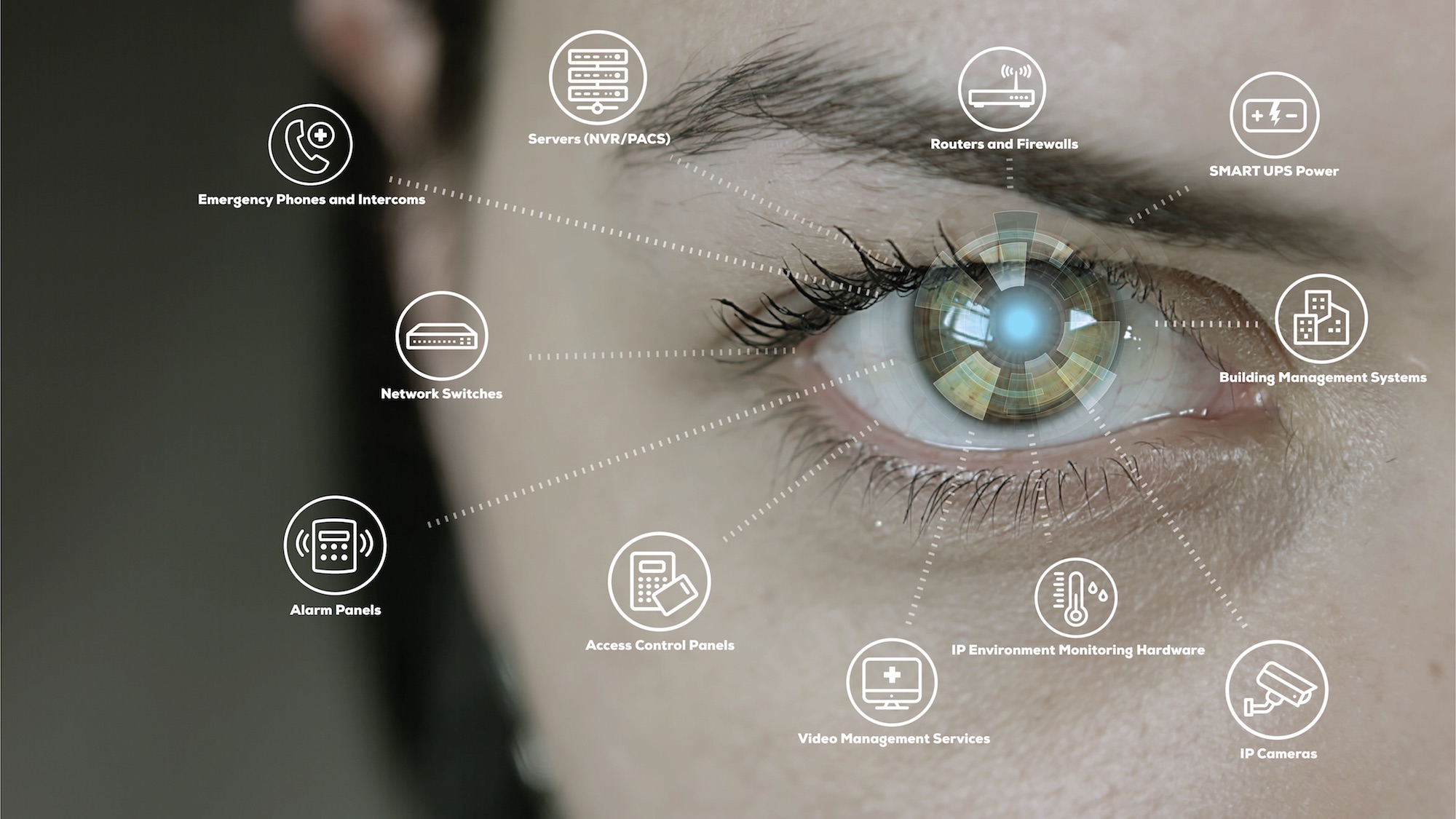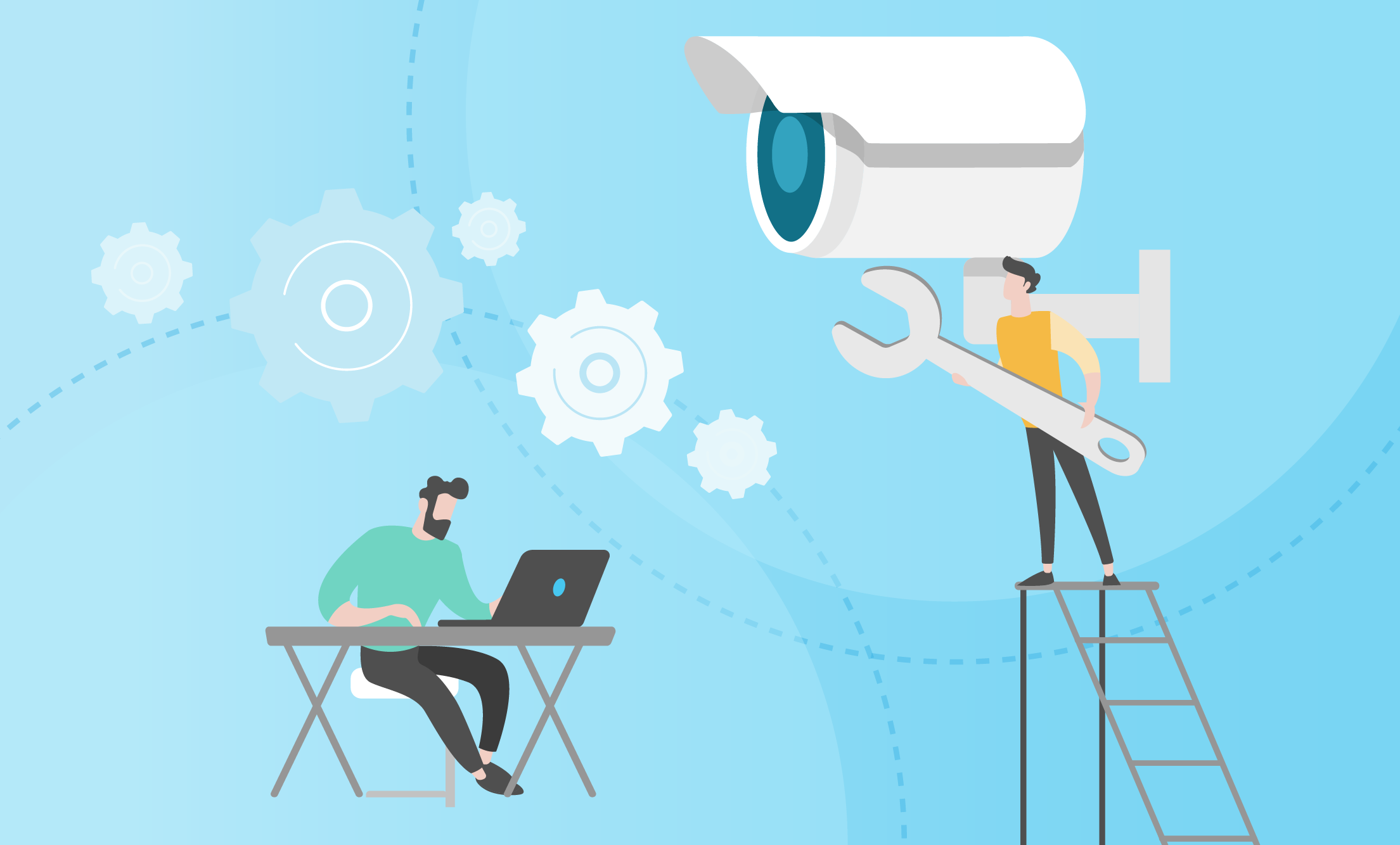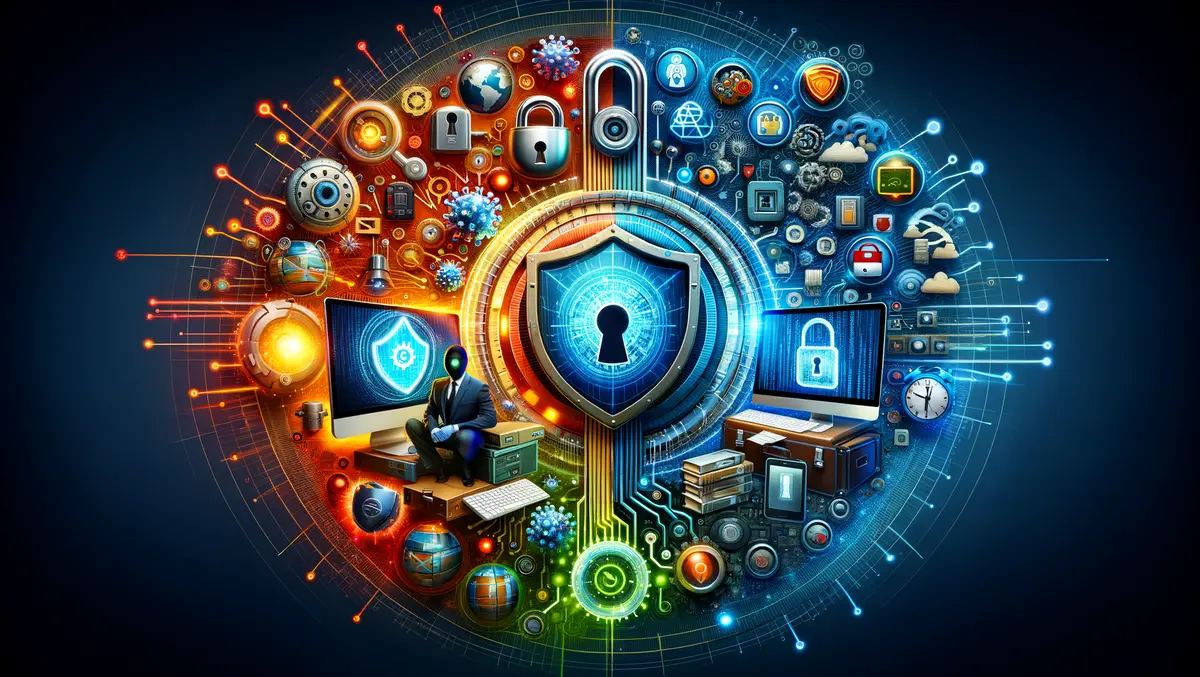ARTICLES
- HOME
- -
- ARTICLES
Securing the Future: How Sustainable and Smart Physical Security Services are Transforming the Modern Enterprise

In today's rapidly evolving business landscape, physical security has become an indispensable component of any successful enterprise. As organizations grapple with an array of threats, ranging from theft and vandalism to cyber attacks and natural disasters, safeguarding their assets and personnel has never been more crucial. Physical security services play a pivotal role in mitigating these risks, ensuring the continuity of operations, and fostering a secure environment for employees, customers, and stakeholders alike.
However, traditional security measures often fall short in addressing the complex challenges of the modern era. Relying solely on conventional methods can prove inefficient, unsustainable, and ill-equipped to meet the ever-changing demands of the digital age. This is where sustainable and smart physical security services come into play, offering a comprehensive and forward-thinking approach to protecting enterprises and their most valuable resources.
Understanding sustainable and smart physical security services:
Sustainable and smart physical security services represent a paradigm shift in the way organizations approach security. They integrate cutting-edge technologies, data-driven insights, and eco-friendly practices to create a holistic and future-proof security strategy. By embracing these innovative solutions, enterprises can achieve unparalleled levels of protection while simultaneously reducing their environmental footprint and optimizing operational efficiencies.
At the core of sustainable and smart physical security services lies the fusion of advanced technologies and sustainable practices. These services leverage cutting-edge tools such as artificial intelligence (AI), machine learning, the Internet of Things (IoT), and cloud computing to enhance situational awareness, automate processes, and enable real-time monitoring and response capabilities.
Furthermore, these services prioritize environmentally conscious practices, such as energy-efficient systems, renewable energy sources, and sustainable materials, minimizing the environmental impact of security operations. By adopting a greener approach, enterprises not only contribute to a healthier planet but also position themselves as socially responsible organizations, resonating with stakeholders and customers who value sustainability.
Advantages:
-
Enhanced Security: Smart and sustainable physical security services leverage advanced technologies to detect, deter, and respond to threats with unparalleled speed and accuracy. AI-powered analytics, predictive modeling, and real-time monitoring capabilities enable proactive threat identification and mitigation, reducing the risk of security breaches and minimizing potential damages.
-
Operational Efficiency: By automating processes, streamlining workflows, and optimizing resource allocation, these services enhance operational efficiencies, resulting in cost savings and improved productivity. Data-driven insights and predictive analytics help organizations make informed decisions, enabling them to allocate resources more effectively and optimize security strategies.
-
Sustainability and Cost Savings: Embracing sustainable practices not only contributes to environmental preservation but also translates into long-term cost savings. Energy-efficient systems, renewable energy sources, and eco-friendly materials reduce operational costs while minimizing the organization's carbon footprint, aligning with corporate social responsibility goals.
-
Scalability and Adaptability: Smart and sustainable physical security services are designed to be scalable and adaptable, allowing organizations to seamlessly adjust their security measures as their needs evolve. With cloud-based solutions and modular architectures, these services can accommodate growth, expansion, or changes in operational requirements without compromising security or incurring significant additional costs.
-
Improved User Experience: By leveraging user-friendly interfaces, intuitive controls, and seamless integration with existing systems, these services enhance the overall user experience for both security personnel and end-users. Streamlined processes and real-time visibility contribute to a more efficient and cohesive security ecosystem, fostering a sense of safety and confidence within the organization.
Trends in sustainable and smart physical security services:
The physical security landscape is constantly evolving, driven by technological advancements, changing threat landscapes, and evolving customer expectations. As we navigate this dynamic environment, several notable trends are shaping the future of sustainable and smart physical security services:
-
Artificial Intelligence and Machine Learning: AI and machine learning are revolutionizing physical security by enabling advanced threat detection, predictive analytics, and automated decision-making. These technologies analyze vast amounts of data from various sources, such as surveillance cameras, access control systems, and sensors, to identify patterns, anomalies, and potential threats, enabling proactive security measures.
-
Internet of Things (IoT) and Connected Devices: The proliferation of IoT devices and connected sensors is transforming physical security by providing real-time data and enabling seamless integration across multiple systems. Smart cameras, access control systems, and environmental sensors can communicate and share information, enabling a comprehensive and coordinated security approach.
-
Cloud Computing and Mobility: Cloud-based security solutions offer scalability, accessibility, and cost-effectiveness, allowing organizations to leverage cutting-edge technologies without the need for extensive on-premises infrastructure. Additionally, mobile applications and remote monitoring capabilities enable real-time access to security data and control from anywhere, enhancing situational awareness and rapid response.
-
Cybersecurity Integration: As physical and cyber threats become increasingly intertwined, the integration of cybersecurity measures into physical security solutions is gaining momentum. This convergence ensures a holistic approach to risk mitigation, protecting both physical assets and digital infrastructure from potential threats.
-
Sustainability and Green Initiatives: The growing emphasis on environmental sustainability is driving the adoption of eco-friendly practices in physical security. Energy-efficient systems, renewable energy sources, and sustainable materials are becoming essential components of modern security solutions, reducing the environmental impact while promoting corporate social responsibility.
-
Analytics and Data-Driven Decision Making: The ability to collect, analyze, and interpret vast amounts of data is transforming physical security operations. Advanced analytics and data-driven decision-making enable organizations to identify patterns, optimize resource allocation, and make informed decisions based on actionable insights, enhancing overall security effectiveness.
Implementation:
Implementing sustainable and smart physical security services requires a strategic and holistic approach that considers the unique needs, infrastructure, and goals of each organization. While the specific implementation steps may vary, here is a general framework to guide the process:
-
Assess Current Security Posture: Conduct a comprehensive assessment of the organization's existing security measures, infrastructure, and vulnerabilities. Identify areas for improvement, potential risks, and opportunities for integration with sustainable and smart technologies.
-
Define Security Objectives and Requirements: Clearly define the organization's security objectives, including risk mitigation, compliance requirements, sustainability goals, and operational efficiency targets. These objectives will serve as the foundation for designing and implementing the new security solution.
-
Develop a Comprehensive Security Strategy: Based on the assessment and defined objectives, develop a comprehensive security strategy that incorporates sustainable and smart physical security services. This strategy should outline the specific technologies, processes, and best practices to be implemented, as well as the roles and responsibilities of stakeholders.
-
Select and Integrate Technologies: Evaluate and select the appropriate sustainable and smart physical security technologies, such as AI-powered surveillance systems, IoT sensors, access control systems, and energy-efficient infrastructure. Ensure seamless integration with existing systems and infrastructure to create a cohesive and interoperable security ecosystem.
-
Implement Sustainable Practices: Incorporate sustainable practices into the security solution, including energy-efficient systems, renewable energy sources, and eco-friendly materials. Establish processes and procedures to monitor and optimize the environmental impact of security operations.
-
Train Personnel and Stakeholders: Provide comprehensive training to security personnel, IT staff, and relevant stakeholders on the new systems, processes, and best practices. Ensure a smooth transition and effective utilization of the sustainable and smart physical security services.
-
Continuous Monitoring and Optimization: Implement robust monitoring and reporting mechanisms to track the performance, efficiency, and effectiveness of the security solution. Regularly review and optimize the systems based on data-driven insights, emerging threats, and evolving organizational needs.
-
Establish Governance and Compliance: Develop and implement governance policies, procedures, and compliance frameworks to ensure the proper management, oversight, and regulatory compliance of the sustainable and smart physical security services.
Throughout the implementation process, it is essential to collaborate closely with stakeholders, security experts, and technology partners to ensure a seamless transition and effective integration of the new security solution.
Case studies:
To illustrate the transformative impact of sustainable and smart physical security services, let's explore two real-world case studies:
Case Study 1: Global Manufacturing Company
A multinational manufacturing company with facilities across multiple countries faced the challenge of ensuring consistent and effective physical security measures while adhering to stringent sustainability goals. The company implemented a comprehensive smart and sustainable physical security solution that leveraged AI-powered video analytics, IoT sensors, and cloud-based access control systems.
The solution included energy-efficient LED lighting, solar-powered surveillance cameras, and sustainable building materials. Advanced analytics and predictive modeling capabilities enabled proactive threat detection and resource optimization, while cloud-based access control systems streamlined operations and reduced the need for on-premises infrastructure.
The results were remarkable. The company achieved a 30% reduction in energy consumption associated with security operations, a 25% decrease in security-related incidents, and a significant improvement in operational efficiency. Additionally, the company's carbon footprint was reduced, aligning with its sustainability goals and enhancing its reputation as an environmentally responsible organization.
Case Study 2: Large Retail Chain
A leading retail chain with numerous locations across the country sought to enhance its physical security measures while maintaining a customer-friendly environment. The company implemented a smart and sustainable physical security solution that integrated AI-powered video analytics, facial recognition technology, and energy-efficient systems.
The solution utilized advanced video analytics to detect potential threats, such as suspicious behavior or abandoned objects, while facial recognition technology enabled efficient access control and enhanced situational awareness. Energy-efficient lighting, HVAC systems, and sustainable building materials contributed to the overall sustainability of the solution.
The results were impressive. The retail chain experienced a significant reduction in theft and security incidents, improved customer satisfaction due to the enhanced sense of safety, and a substantial decrease in energy consumption and operational costs associated with security operations. The company's commitment to sustainable practices also resonated positively with customers and stakeholders, reinforcing its brand image as an environmentally conscious organization.
The future of sustainable and smart physical security services:
The future of sustainable and smart physical security services is brimming with exciting possibilities and transformative potential. As technology continues to evolve and sustainability becomes an increasingly critical consideration, we can expect to witness remarkable advancements in this field:
-
Seamless Integration and Interoperability: Future security solutions will prioritize seamless integration and interoperability across multiple systems and platforms. Standardized protocols and open architectures will enable disparate technologies to communicate and share data, creating a unified and cohesive security ecosystem.
-
Advanced Biometrics and Identity Management: Biometric technologies, such as facial recognition, iris scanning, and gait analysis, will become more sophisticated and widely adopted, enhancing access control, identity management, and situational awareness capabilities.
-
5G and Edge Computing: The advent of 5G and edge computing will revolutionize real-time data processing and decision-making in physical security. With ultra-low latency and high-speed connectivity, security systems will be able to process and analyze data closer to the source, enabling faster response times and more efficient resource allocation.
-
Autonomous Systems and Robotics: Autonomous systems and robotics will play a significant role in physical security operations, enabling automated patrolling, surveillance, and response capabilities. These technologies will enhance efficiency, reduce human error, and allow for the deployment of security resources in hazardous or hard-to-reach areas.
-
Predictive Analytics and Artificial Intelligence: Advancements in predictive analytics and AI will enable more accurate threat prediction, risk assessment, and proactive security measures. Machine learning algorithms will continuously analyze vast amounts of data, identifying patterns and anomalies, and providing actionable insights for security decision-making.
Choosing the right security provider:
Selecting the right security provider is crucial for organizations seeking to implement sustainable and smart physical security services. With numerous providers offering varying solutions and capabilities, it is essential to evaluate and choose a partner that aligns with your organization's specific needs, goals, and values. Here are some key considerations when choosing a security provider:
Deep Security has been providing quality security services, including virtual video monitoring and remote security guard services, to commercial, industrial and residential buildings and Events in Singapore for property protection.
We are also the preferred Security agency for Event security services in Singapore. We have provided security officers for events ranging from a 1-man small event to international events requiring manpower of up to 350 men. Our services include virtual greeter and concierge services for events.
-
Expertise and Experience: Assess the provider's expertise and experience in delivering sustainable and smart physical security solutions. Look for a provider with a proven track record, industry recognition, and a deep understanding of the latest technologies and best practices.
-
Service Offerings and Capabilities: Evaluate the provider's service offerings and capabilities to ensure they meet your organization's specific requirements. Consider factors such as the range of technologies offered, integration capabilities, scalability, and customization options.
-
Sustainability Commitment: Prioritize providers that demonstrate a genuine commitment to sustainability and environmental responsibility. Evaluate their eco-friendly practices, use of renewable energy sources, and efforts to minimize their environmental impact.
-
Innovation and Continuous Improvement: Choose a provider that embraces innovation and continuous improvement. Look for a partner that invests in research and development, stays ahead of emerging trends, and proactively updates their solutions to meet evolving security challenges and customer needs.
-
Customer Support and Service: Reliable customer support and service are essential for ensuring the smooth operation and maintenance of your security solution. Assess the provider's customer support channels, response times, and their ability to provide ongoing training and technical assistance.
Integrating sustainable and smart physical security with existing systems:
Integrating sustainable and smart physical security services with existing systems is a crucial step in creating a cohesive and efficient security ecosystem. Seamless integration not only optimizes operational efficiency but also enhances situational awareness, facilitates data sharing, and enables a coordinated response to potential threats. Here are some key considerations and best practices for integrating sustainable and smart physical security with existing systems:
-
Conduct a Comprehensive System Audit: Before initiating the integration process, conduct a thorough audit of your organization's existing systems, including access control, surveillance, building management, and IT infrastructure. Identify potential compatibility issues, data formats, and communication protocols to ensure seamless integration.
-
Develop an Integration Strategy: Based on the system audit, develop a comprehensive integration strategy that outlines the specific systems to be integrated, the integration approach (e.g., API, middleware, or direct integration), and the desired level of interoperability.
-
Establish Data Standards and Protocols: Ensure that data standards and communication protocols are established and adhered to across all integrated systems. This promotes interoperability, facilitates data sharing, and ensures that information is interpreted consistently across the security ecosystem.
-
Leverage Open Standards and Interoperability Frameworks: Adopt open standards and interoperability frameworks, such as the Physical Security Interoperability Alliance (PSIA) or the Open Network Video Interface Forum (ONVIF). These standards promote vendor-neutral integration and enable seamless communication between diverse security systems.
-
Implement Robust Cybersecurity Measures: As you integrate physical security systems with IT infrastructure, it is crucial to implement robust cybersecurity measures to protect against potential cyber threats. This includes firewalls, access controls, encryption, and regular security audits.
Conclusion:
In the ever-evolving landscape of modern enterprises, sustainable and smart physical security services are emerging as a game-changer, revolutionizing the way organizations approach security, efficiency, and environmental responsibility. By embracing these innovative solutions, businesses can achieve unparalleled levels of protection while simultaneously reducing their environmental footprint and optimizing operational efficiencies.
The integration of cutting-edge technologies, such as AI, machine learning, IoT, and cloud computing, with sustainable practices like energy-efficient systems and renewable energy sources, creates a holistic and future-proof security strategy. This approach not only enhances situational awareness, automates processes, and enables real-time monitoring and response capabilities but also aligns with corporate social responsibility goals and resonates with stakeholders and customers who value sustainability.







